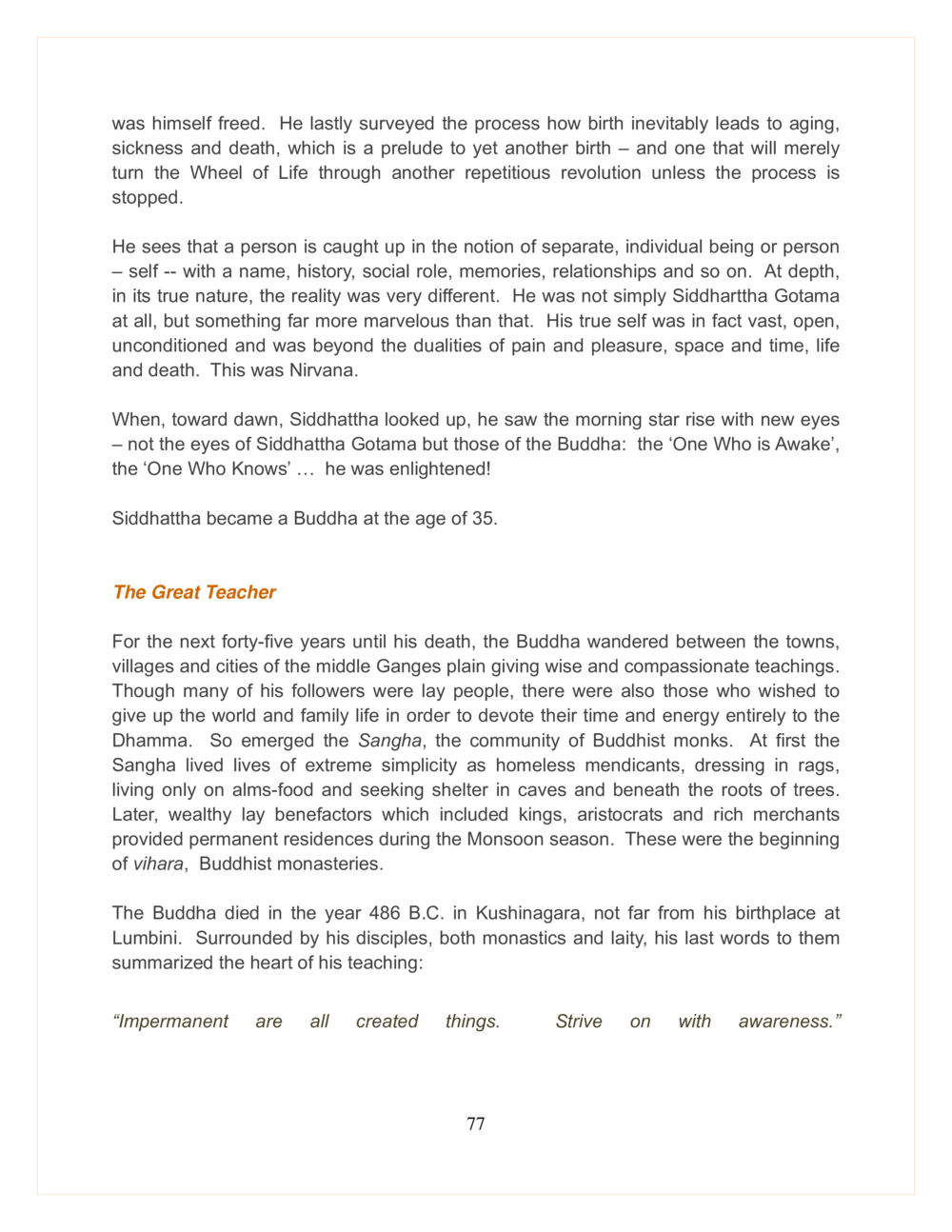The Enlightenment of Siddhattha Gotama : หน้า 77/115
DMC Translor’s handbook : หน้า 77/115 Explore the profound transformation of Siddhattha Gotama into the Buddha, his teachings, and the establishment of the Sangha.
18 ครั้ง

สรุปเนื้อหา
This text recounts the journey of Siddhattha Gotama, who realized that life is a cycle of birth, aging, sickness, and death, culminating in his enlightenment as the Buddha. At dawn, he perceived the universe anew, transcending worldly attachments and understanding his true self as something vast and unconditioned, which he identified as Nirvana. Following his enlightenment at age 35, he spent the next 45 years teaching wise and compassionate lessons across the Ganges plain. The emergence of the Sangha, a community of Buddhist monks dedicated to the Dhamma, marked a significant development in Buddhism. After his passing in 486 B.C., the Buddha’s last words served as a reminder of impermanence and the importance of mindfulness in one’s journey.
หัวข้อประเด็น
-Siddhattha Gotama's transformation
-Concept of Nirvana
-The Buddha's teachings
-The establishment of the Sangha
-Imminence of impermanence



















































































































